mobile View, to the German Version tap the flag
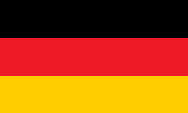

- Salzburg
- Federal Country of the Republic of Austria
- former Austrian crown land: Duchy of Salzburg
• Flags
• Meaning/Origin of the Flag
• Coat of Arms
• Meaning/Origin of the Coat of Arms
• Map of the federal countries of Austria
• Map of the former crown lands of Austria-Hungary (to 1918)
• Numbers and Facts
• History
• Origin of the Country's Name

Flag of the country (Colours of the country),
ratio = 2:3,
Source, by: Wikipedia (D),
Colour, by: Dr. Peter Diem www.peter-diem.at



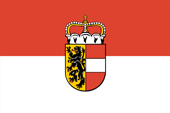
Official flag,
ratio = 2:3,
Source, by: Wikipedia (D),
Colour, by: Dr. Peter Diem www.peter-diem.at







The flag of Salzburg shows two stripes in red and white and was officially introduced on 16th of February in 1922. The colours of the flag are derived from the colours of the right part of the coat of arms. The flag itself was already in use in the 19th century.
In the time of the monarchy, the country had – like all the other crown lands of the Austrian crown – its own colours (Landesfarben), which were used amongst others on horizontally two- or three-striped flags. The colours (Landesfarben) were very often taken from the respective coat of arms of the country or were supplemented by another colour, which not appears in the coat of arms, or they went back to older models of the coat of arms (e.g. Carniola). Officially, the colours had never been regulated or stipulated, so that their sequence varied in practice or even the colors deviated. The Austrian heraldist Hugo Gerard Ströhl (1851–1919) was probably the first to take care of it and asked for the colors (Landesfarben) on the flags at the respective state authorities around 1890 and compiled them. For Salzburg, red and white were ascertained as the country's colors of the crown land.
Austria joined the German Empire in 1938 as one country. The federal structures played no role, they were completely replaced by the NSDAP districts (NS-Gau), the countries were abolished. From now on, offices and authorities had to use the empire's official flag. The corresponding national colors may still have exist, but not in the form of flags. They may have been used sporadically on SA uniforms or in some ranks of the Hitler Youth in the chest cord.
The flags of the Federal States of Austria are used with or without the coat of arms. For official use, however, they always show it. The general population is permitted to use this format as well.
There do not seem to be any legal regulations for the colours of the flags of the Austrian federal states; since they are apparently not defined, they are reproduced in practice within a usual standard range. However, the Austrian publicist and media scientist Dr. Peter Diem gives recommendations for the reproduction of the colours: For Salzburg, a bright red, most likely corresponding to Pantone 179.
Source: Dr. Peter Diem austria-forum.org,
Wikipedia (D),
Flaggen Enzyklopädie,
Volker Preuß,
Österreichisch-Ungarische Wappenrolle


since 1921,
Coat of arms of Salzburg,
Source, by: by: Wikipedia (D),
Colour by: Dr. Peter Diem www.peter-diem.at
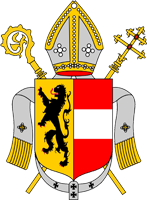
to 1803,
Coat of arms of the Prince-Archbishopric of Salzburg,
Source, by: by: Wikipedia (D)

1803–1805,
theoretical coat of arms of the Electorate of Salzburg
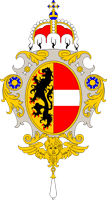
ca.1890–1918,
Coat of arms of the Duchy of Salzburg,
Source, by: Ströhl, Wappenrolle Österreich-Ungarns, 1890, via Wikipedia (D)

The today's coat of arms of the State of Salzburg was introduced on 16th of February in 1921. The coat of arms dates back to the 13th century. It shows a shield parted per pale (halved vertically): in the left field a black lion on gold, in the right field a silver bar in red. The black lion on gold goes back to the partial transition of the heraldry of Duke Philipp of Carinthia from the house of Sponheim, 1246–1256 archbishop of Salzburg, into the coat of arms of the archdiocese. At that time the coat of arms of Carinthia showed three black lions on gold, which go back to the Staufer Babenbergers of Moedlingen. The silver bar in red is not the Austrian red-white-red band shield of the Babenbergers. The origin of this heraldry is for Salzburg unclear. It can only be assumed that this coat of arms may have its origin in some ecclesiastical heraldry for the archdiocese. Until today bishoprics and dioceses have their own coat of arms. The country also had a seat in the Reichstag of the Holy Roman Empire of German Nation on the ecclesiastical bank of the imperial prince's council, and this was led by the Archduke of Austria. The crown on the coat of arms is a common princely hat, that has been crowning the coat of arms at least since 1803. It commemorates the (Electoral) Principality of Salzburg under Elector Ferdinand III. of Tuscany and also the Duchy of Salzburg (1806-1808 and 1850-1918). The Austrian heraldist Hugo Gerard Ströhl supplemented the coat of arms of the Duchy of Salzburg ca. 1890, in its last known version, by an angel's head in the decorative border. It should remind of the Prince Archbishopric of Salzburg, which existed until 1803.
Source: www.salzburg.gv.at,
Wikipedia (D),
Flaggen Enzyklopädie,
Sponheim,
Österreichisch-Ungarische Wappenrolle

The federal countries of Austria:
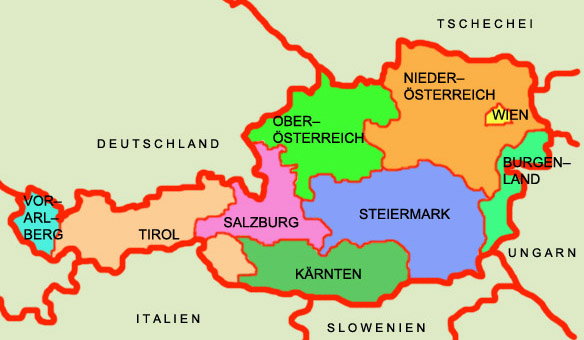
Source: Volker Preuß
• Burgenland
• Carinthia (Kärnten)
• Lower Austria (Niederösterreich)
• Upper Austria (Oberösterreich)
• Salzburg
• Styria (Steiermark)
• Tyrol (Tirol)
• Vorarlberg
• Vienna (Wien)

Map ca. 1910:
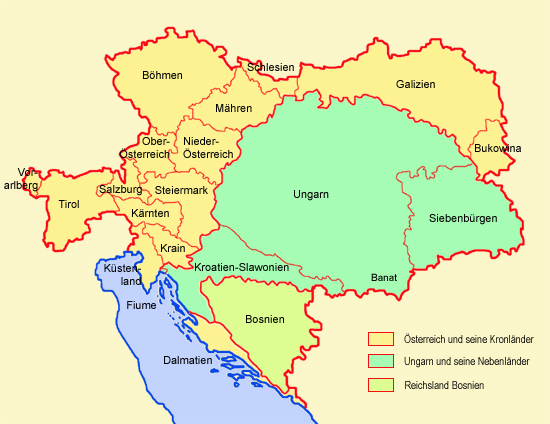
Source: Volker Preuß

Area: 2.763 square miles
Inhabitants: 555.200 (2019)
Density of Population: 201 inh./sq.mi.
Capital: Salzburg, 154.200 inh. (2019)
official Language: Deutsch
Currency: 1 Euro = 100 Cent
Time Zone: MEZ
Source: Wikipedia (D)

antiquity · in the today’s Country of Salzburg settle Raetians, Illyrians and Celts, the Illyrians found Juvavum (the afterwards Salzburg)
since 14 B.C. · Roman conquest, establishment of the Province of Noricum
45 · Juvavum becomes a independent municipality
166–168 · invasions of the Teutonic tribe of the Marcomans
213 · invasions of the Alemannes
254 · invasions of the Marcomans
409–452 · invasions of the Huns
476 · dismissal of the last Roman emperor Romulus Augustulus, end of the (West)Roman Empire, settlement by Bayuvares
ca. 600 · the region of Juvavum comes to the Tribal Duchy of Bavaria
696 · the Bishop of Worms gets Juvavum (meanwhile named Ivavo) from the Bavarian duke
739 · Ivavo becomes seat of a bishop
755 · the name Salzburg is documentarily mentioned for the first time
788 · conquest of Bavaria by the Frankish Empire of the Carolingians
798 · Salzburg becomes an arch-diocese (seat of a archbishop)
843/870/880 · at the division of the Frankish Empire comes Bavaria to the East Frankish Empire (later named German Empire)
900–955 · invasions of the Hungarians
996 · the Arch-Diocese of Salzburg earns rights for market, coinage and toll
1200–1246 · consolidation of the territory of the arch-diocese
1287 · Salzburg earns the rights of a town
14th cent. · the Arch-Diocese of Salzburg becomes independent from Bavaria
1731 · 20.000 Protestant residents of Salzburg have to leave their homeland
1803 · German Mediatisation (Reichsdeputationshauptschluss), the sovereign Arch-Diocese of Salzburg expires, the country becomes an electorate
1806 · Salzburg becomes affiliated to Austria as a duchy
1808 · Salzburg becomes annexed to Bavaria
1816 · Salzburg becomes affiliated as "Salzachkreis" (Salzach Distict) to Upper Austria (Austria above the Enns)
1848/1849 · revolution, new constitution: the titular hereditary territories of the Habsburgs in the Austrian Empire become converted to crown lands with their own Landtag (parliament),
reestablishment of the Duchy of Salzburg, the country becomes a crown land
12th of November 1918 · proclamation of German Austria to the Republic of Austria, Salzburg becomes an Austrian federal country
13th of March 1938 · annexation of Austria to the German Empire, the administrative "NS-Gau of Salzburg" takes the place of the Country of Salzburg
27th of April 1945 · proclamation of the Republic of Austria "Second Republic", Salzburg becomes again an Austrian federal country, but stays occupied by US-american troops until 1955
1955 · withdrawal of the occupation troops
Source: Atlas zur Geschichte,
Wikipedia (D),
World Statesmen,
RetroBib Retrobibliothek,
Discovery '97,
www.salzburg.gv.at,
Volker Preuß

The name of the Country of "Salzburg" (verbatim: Salt Castle) has its roots logically in the Town of Salzburg which became already in 739 a seat of a bishop. In 798 was established the Arch-Diocese of Salzburg a ecclesiastical principality which existed until 1803. The name of the Town of "Salzburg" – which was founded by the Illyrians as "Juvavum" – has its roots in the name of the "Salzach River" on its both sides the town is situated. The name "Salzach" could have its roots in the saltworks (salt holes and mines) in the vicinity.
Source: Volker Preuß

Further Austria pages (historical flags and coats of arms):
• Empire of the Austrian Habsburgs (to 1804)
• Empire of Austria (1814–1867)
• Austria-Hungary (1867–1918)
• Republic of Austria (since 1918)

![]()














